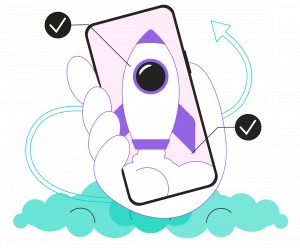Marketing for Brand Partnerships: How Gamification Can Help Your Marketing Strategy
March 28, 2023
Introduction
In today’s fast-paced business landscape, companies are constantly seeking new ways to promote their brand and connect with consumers. One effective marketing strategy is through brand partnerships, where two or more companies team up to create a joint marketing campaign or product. By combining resources and expertise, brands can reach new audiences and achieve greater impact.
If you think to use this strategy, let me show you how to make it even better.

Gamification and Consumer Engagement
Gamification is rooted in the theories of self-determination and intrinsic motivation. Self-determination theory suggests that humans have an innate tendency to seek out activities that satisfy their psychological needs for autonomy, competence, and relatedness. Intrinsic motivation theory posits that individuals are more likely to engage in an activity when they find it inherently enjoyable or rewarding. Gamification leverages these theories by providing consumers with a sense of autonomy, competence, and relatedness in their interactions with brands.
Here are a few examples of how gamification can be used as marketing strategy
-
Rewards-based programs: Companies can create rewards-based programs that encourage customers to engage with both brands. For example, a fitness brand and a health food company could team up to create a rewards program that offers discounts but also healthy recipes, workout programs and tips to create healthy habits, like a workout journey with milestones adapted to the user’s needs. Motivate the people to increase their fitness level or sports skill. The customers do not only receive a discount, the intrinsic motivation is incorporated and that’s what will keep them as customers for the long run.
-
Interactive experiences: Brands can create interactive experiences that allow customers to engage with the brand and the partner company. For example, a car manufacturer and a music streaming service could team up to create a gamified experience in an app that allows users to customize the sound system in their car while listening to music. The system could be customized by different users (if it’s a family car for example) and the car could sense the multiple users and combine their preferences. The system could also customize the genre of music / content the users would receive depending on the time of day for example. In the mornings they might like some speed up, high energy and higher volume to motivate them for the day ahead. In the evenings they might prefer a podcast. Same goes here, if multiples users are detected the system could use the collected data and offer something that suits everyone’s preferences. The customers would not only receive a one time experience but would be pleased to know that they could have a pleasant car ride with their loved ones that they could customize anytime. (this is the intrinsic motivation)
-
Competitions and challenges: Brands can create competitions and challenges that encourage customers to engage with both brands. For example, a sports brand and a soft drink company could team up to create a fitness challenge that offers donations for completing a certain number of workouts while consuming the partner company’s product. They can promise that every time the challenges are complete they will donate for a disabled athlete. The costumers are driven to be part of the campaign because they feel like they all could work together for a great cause. (intrinsic again)
The use of game-like mechanics can create a sense of exclusivity and excitement for consumers, which can increase their willingness to pay and their perceived value of the partnership. However, it’s important to ensure that the gamification elements are aligned with the brand values and marketing strategy, and that the experience is seamless and easy for customers to participate in.
Conclusion:
Gamification emerges as a promising marketing strategy that enhances consumer engagement and increases the effectiveness of brand partnerships. By leveraging self-determination and intrinsic motivation principles, gamification actively creates more collaborative, immersive, and rewarding brand experiences for consumers. To measure gamification effectiveness, comprehensively evaluate KPIs such as engagement, retention, and sales. Ultimately, gamification provides a valuable opportunity for brands to differentiate themselves and achieve their marketing goals in a competitive market.
1
Recent posts


